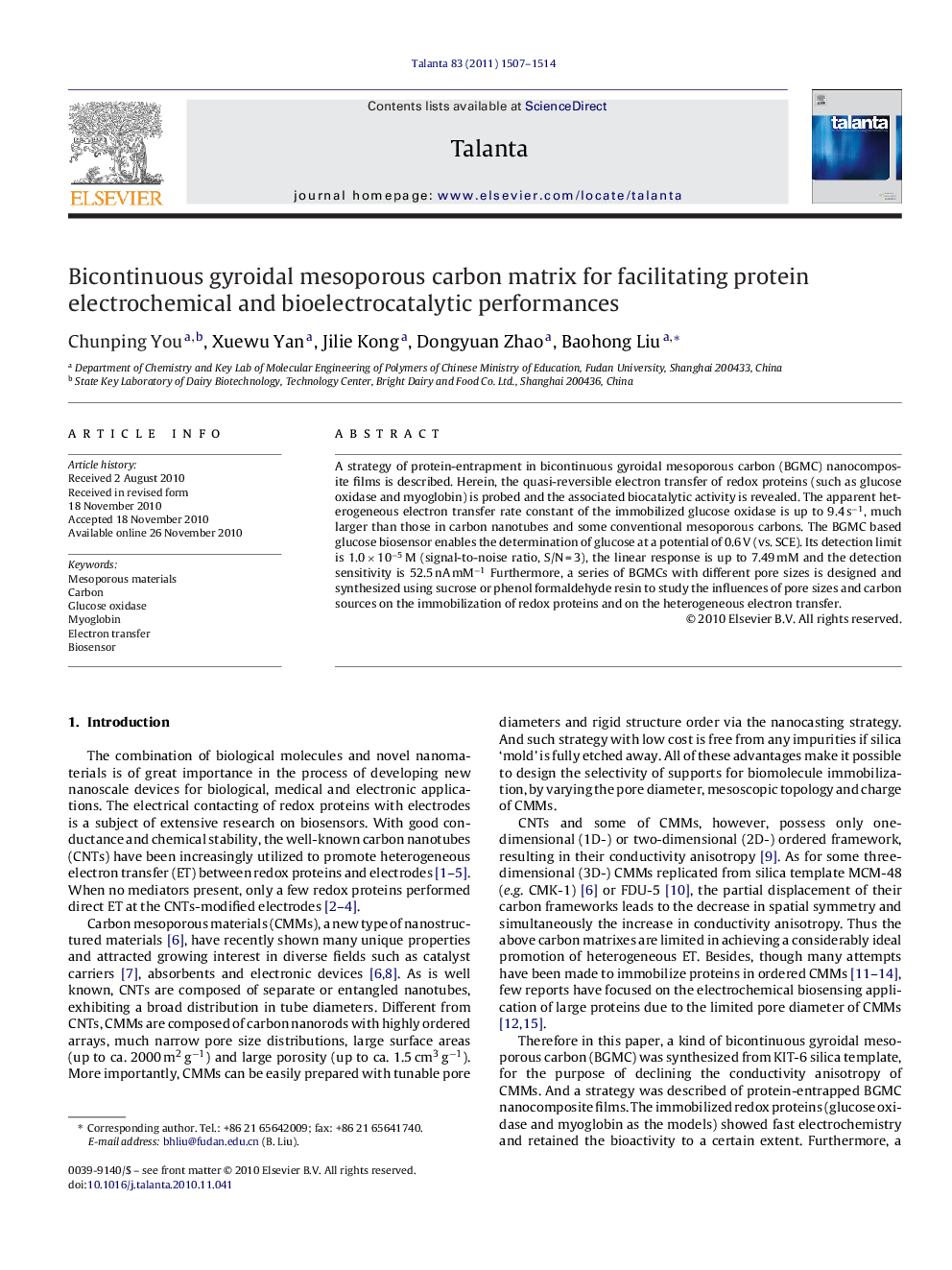| Article ID | Journal | Published Year | Pages | File Type |
|---|---|---|---|---|
| 10559556 | Talanta | 2011 | 8 Pages |
Abstract
A strategy of protein-entrapment in bicontinuous gyroidal mesoporous carbon (BGMC) nanocomposite films is described. Herein, the quasi-reversible electron transfer of redox proteins (such as glucose oxidase and myoglobin) is probed and the associated biocatalytic activity is revealed. The apparent heterogeneous electron transfer rate constant of the immobilized glucose oxidase is up to 9.4Â sâ1, much larger than those in carbon nanotubes and some conventional mesoporous carbons. The BGMC based glucose biosensor enables the determination of glucose at a potential of 0.6Â V (vs. SCE). Its detection limit is 1.0Â ÃÂ 10â5Â M (signal-to-noise ratio, S/NÂ =Â 3), the linear response is up to 7.49Â mM and the detection sensitivity is 52.5Â nAÂ mMâ1 Furthermore, a series of BGMCs with different pore sizes is designed and synthesized using sucrose or phenol formaldehyde resin to study the influences of pore sizes and carbon sources on the immobilization of redox proteins and on the heterogeneous electron transfer.
Related Topics
Physical Sciences and Engineering
Chemistry
Analytical Chemistry
Authors
Chunping You, Xuewu Yan, Jilie Kong, Dongyuan Zhao, Baohong Liu,
